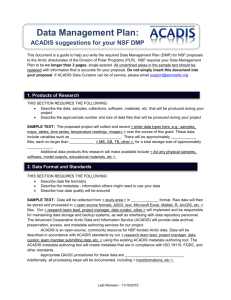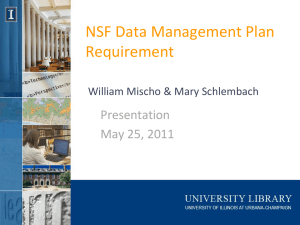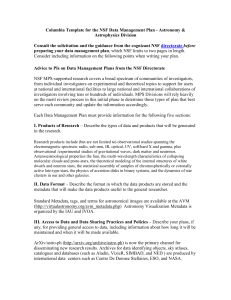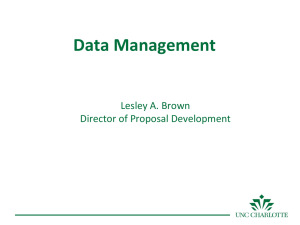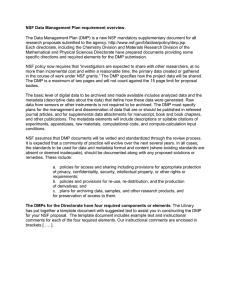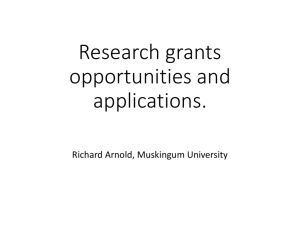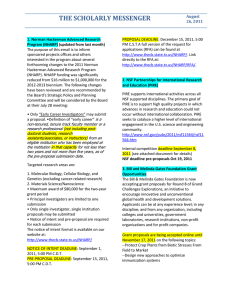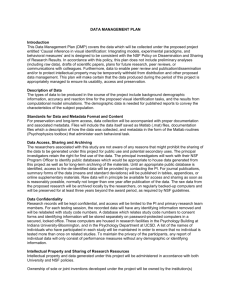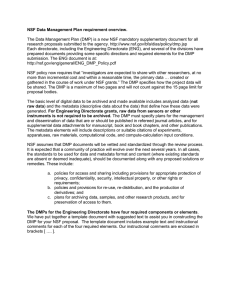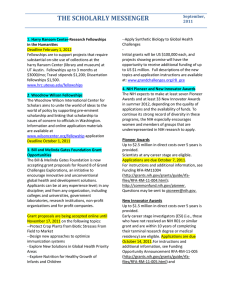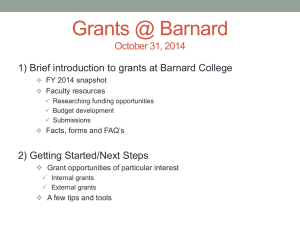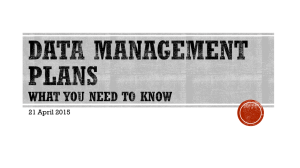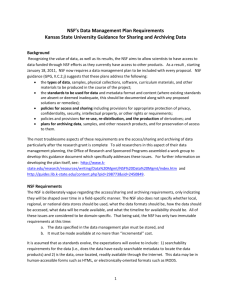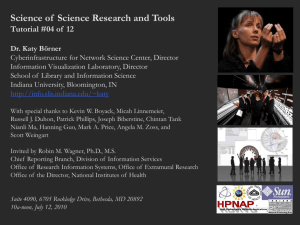Creative Commons Attribution-NonCommercial
advertisement
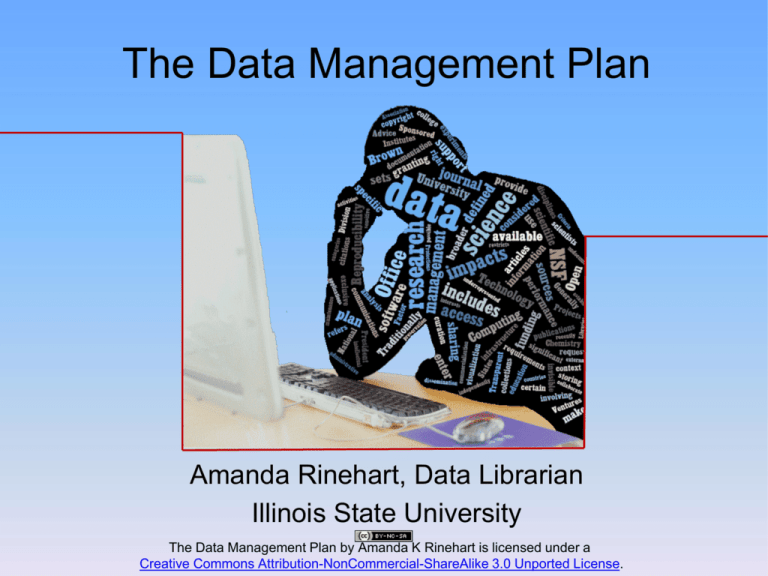
The Data Management Plan Amanda Rinehart, Data Librarian Illinois State University The Data Management Plan by Amanda K Rinehart is licensed under a Creative Commons Attribution-NonCommercial-ShareAlike 3.0 Unported License. Sharing - why? Funding requirements – NSF, NIH, NEH Increase visibility, collaborations, possibly citations Increase the rate of advancement in your field Data sharing policies NSF - 2011 “Investigators are expected to share with other researchers, at no more than incremental cost and within a reasonable time, the primary data…created or gathered in the course of work under NSF grants” NIH - 2003 “investigators submitting an NIH application seeking $500,000 or more in direct costs in any single year are expected to include a plan for data sharing or state why data sharing is not possible” Federal Data Sharing Policies NSF Data Management Plan http://www.nsf.gov/bfa/dias/policy/dmp.jsp NIH Data Sharing Policy http://grants.nih.gov/grants/policy/data_sharing/data_sharing_ guidance.htm NEH Data Sharing Policy http://www.neh.gov/files/grants/data_management_plans_201 3.pdf Components of a plan Policies/legal requirements Collection Metadata Access, sharing, re-use Preservation, storage, security Policies or Legal Requirements Institutional policies – intellectual property policy, technology transfer policy, Institutional Review Board commitments, good lab notebook practice statements, etc. Legal requirements – classified research, work for hire, etc. Collection What is the data? How was it collected? When and where? Documentation (Metadata) “What information would someone unfamiliar with your data need in order to find, evaluate, understand, and reuse them?” Houston, B. 2001. Data management plans (DMP) for NSF proposals. UW-Milwaukee Metadata in the file name Minimal metadata: • Title, abstract • Owner, primary contact • Geographic coverage • Taxonomic coverage • Temporal coverage • Research group/area • Citing publications • Target publication dates • Funding source • Access rights • Destination repository • Intellectual property rights Eggplant Picos 2.2.2011s Crop location date/season Taxonomic geographic temporal nemas NKB.xls pest PI initials taxonomic owner Metadata Schema Universe Riley, J. 2009-2010. Seeing standards: A visualization of the metadata universe. Funded by the Indiana University Libraries White Professional Development Award. Subject Repositories Data citations Attach in the header or re-use statement Thompson Reuters, Elsevier exploring metric options Components of a plan Policies/legal requirements Collection Metadata Access, sharing, re-use Preservation, storage, security When NOT to share Embargo for: Publication Patent rights Export control considerations Personally identifiable information/privacy considerations Scenario In the fall of 2013, a tornado hits Dekalb, eliminating buildings, servers, infrastructure. Everything local is largely compromised. The first month is absorbed by recuperation. How much of your data would be left and where would it be? Within two months, you have temporary working space and staff have worked hard to re-build computing capabilities. With this opportunity to re-structure your data management, would you change your practices? What would you keep the same and what would you change? How would you re-train your people?
